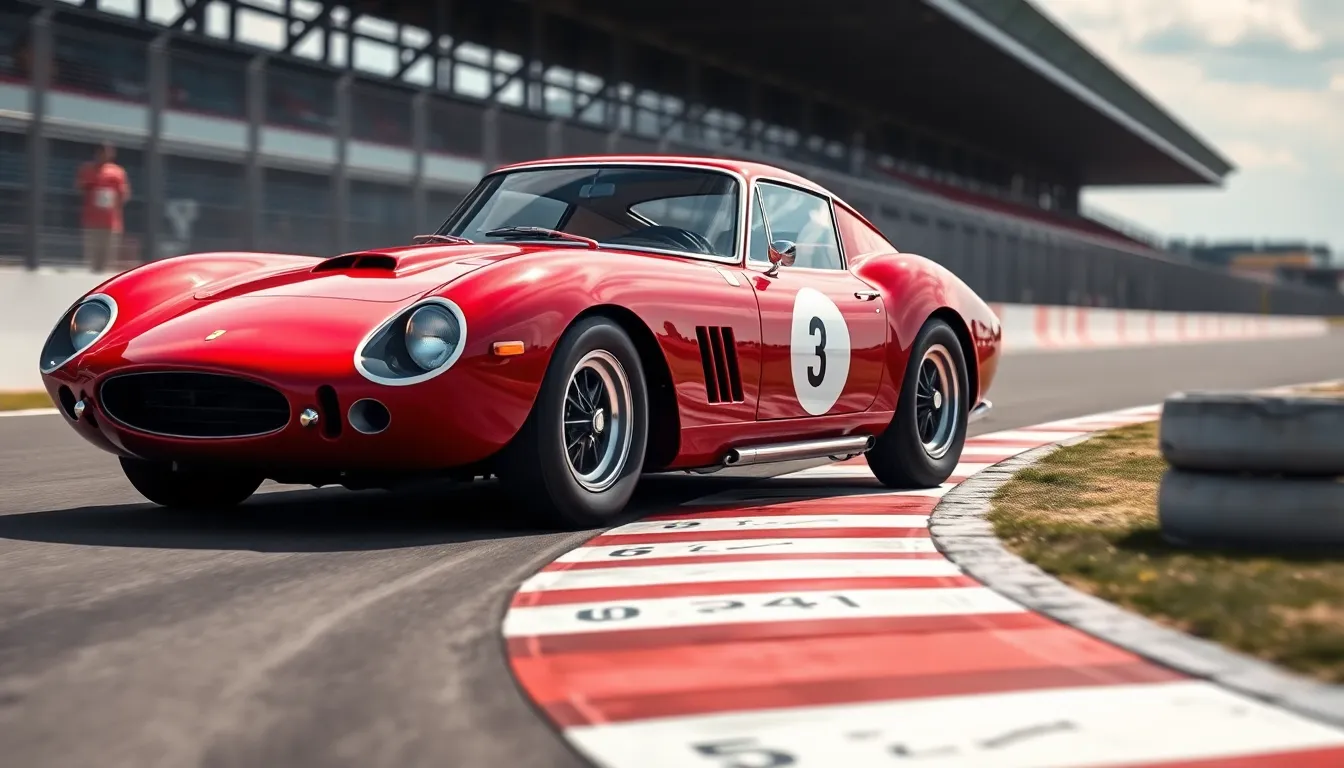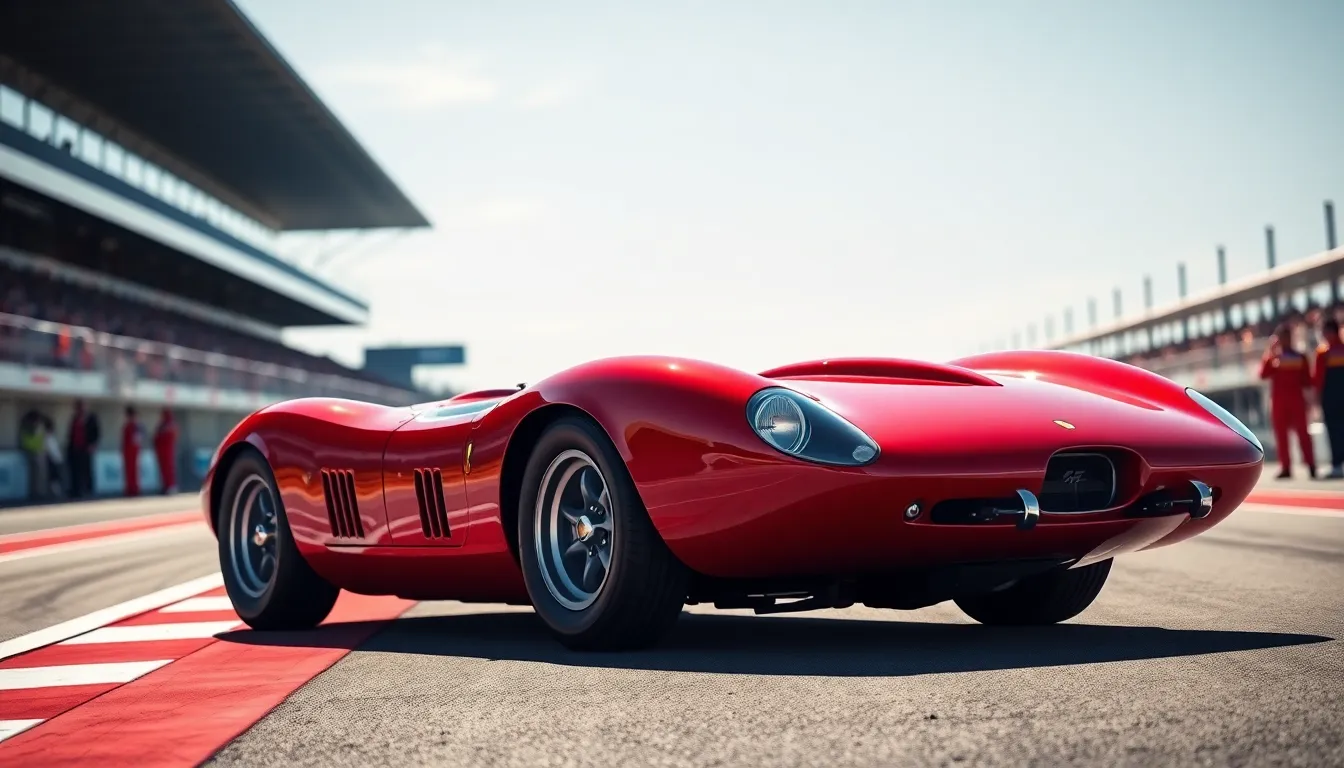Gran Turismo race cars are the ultimate dream machines for speed enthusiasts and casual gamers alike. Imagine the roar of a finely-tuned engine, the thrill of tight corners, and the sweet smell of burning rubber—all from the comfort of your living room. These cars aren’t just for show; they’re meticulously crafted to deliver adrenaline-pumping performance that leaves ordinary vehicles in the dust.
Table of Contents
ToggleOverview of Gran Turismo Race Cars
Gran Turismo race cars represent the pinnacle of automotive engineering. These vehicles combine cutting-edge technology with a design philosophy focused on speed and performance. High-performance engines generate immense horsepower, enabling rapid acceleration and precise handling on the track.
Aerodynamics play a crucial role in the performance of Gran Turismo cars. Specially designed body shapes reduce drag for optimal speed while maintaining stability during sharp turns. Tire selection also matters; racing tires provide better grip, enhancing cornering capabilities and overall control.
Manufacturers invest significant resources in developing Gran Turismo models. For instance, brands like Ferrari, Porsche, and McLaren create iconic vehicles that capture the essence of racing. These cars are equipped with advanced systems, such as traction control and electronic stability, to aid drivers in achieving maximum performance.
Safety features are paramount in Gran Turismo race cars. Innovations include reinforced frames and specialized cockpit designs to protect drivers during high-speed events. Such measures ensure competitors can push the limits without compromising their safety.
Technological advancements enhance the driving experience. Data analytics monitor performance metrics in real-time, allowing racers to fine-tune their strategies during races. This information provides insights into speed, braking patterns, and tire wear, contributing to competitive success.
Gran Turismo race cars also attract a vibrant community of enthusiasts. Fans follow both virtual and real-life championships, celebrating the blend of technology and talent. This connection fosters a shared appreciation for the thrill of motor sports and the technical mastery behind each incredible machine.
History of Gran Turismo Race Cars

Gran Turismo race cars boast a rich history marked by innovation and excellence in automotive engineering. Their journey reflects advancements that push the boundaries of performance.
Early Developments
Early Gran Turismo race cars emerged in the late 20th century, capturing the essence of performance. Designers aimed for speed and agility, leading to the creation of lightweight frames and powerful engines. Brands like Ferrari and Porsche set industry standards, integrating racing technology into road cars. Manual transmissions dominated this era, allowing drivers to engage more intimately with their vehicles. Iconic models like the Ferrari 250 GTO showcased the marriage of luxury and racing capability, influencing future designs.
Evolution Over Time
As technology advanced, Gran Turismo race cars underwent significant transformations. The introduction of aerodynamics reshaped body designs, enhancing stability at high speeds. Manufacturers began utilizing composite materials to reduce weight while improving strength. Electronic systems, including traction control and telemetry, became standard, offering drivers enhanced control under racing conditions. The shift from analog to digital technology marked a turning point, allowing for real-time performance monitoring. Iconic modern vehicles like the McLaren P1 epitomize this evolution, blending art with cutting-edge engineering for exceptional driving experiences.
Notable Gran Turismo Race Cars
Gran Turismo race cars showcase extraordinary engineering and performance that captivate fans and racers alike.
Iconic Models
Ferrari remains a hallmark in the Gran Turismo circuit, with the Ferrari 250 GTO recognized for its sleek design and unmatched racing pedigree. Porsche contributes significantly to this legacy, especially with the Porsche 917, known for its speed and innovative aerodynamics. McLaren’s F1 stands out as a pioneering model that set records, emphasizing lightweight construction for agility on the track. Each model represents a milestone, reflecting evolving technology and pushing the boundaries of what performance cars can achieve.
Innovative Technologies
Advanced aerodynamics help reduce drag, enhancing speed and stability for Gran Turismo race cars. Many vehicles incorporate active suspension systems that adjust in real-time, improving handling and comfort during races. Lightweight composite materials are commonly used, further boosting performance without sacrificing strength. Additionally, data analytics now play a crucial role, allowing teams to analyze performance metrics and make informed decisions in the heat of competition. These technologies collectively create a thrilling driving experience that resonates with both racers and enthusiasts.
The Impact of Gran Turismo on Racing Culture
Gran Turismo significantly influences racing culture by blending the thrill of simulation with real-world racing dynamics. Gamers embrace these race cars as a bridge to experience high-performance racing firsthand. They serve as an entry point for enthusiasts passionate about motorsports.
The series’ commitment to realism attracts not only casual gamers but also professional drivers. Drivers use Gran Turismo to hone their skills, practice new techniques, and familiarize themselves with tracks around the globe. This immersion enables seamless transitions from the virtual world to real-life circuits.
Manufacturers recognize Gran Turismo as a powerful marketing tool. They showcase their cutting-edge technology and design through virtual representation in the game. Brands like Ferrari and Porsche leverage this exposure to instill brand loyalty among players.
Gran Turismo fosters community engagement, bringing together enthusiasts through competitions and events. Players share experiences, discuss tuning strategies, and celebrate achievements with like-minded individuals. Such interactions cultivate a strong sense of camaraderie within racing fan communities.
Racing culture evolves as gamers compete for supremacy in online championships. These competitive environments highlight advancements in racing strategies and vehicle customization, pushing players to innovate. They exemplify the importance of continuous improvement and adaptation in racing.
The connection between Gran Turismo and real-world motorsports deepens as the lines blur. Players often find inspiration from their virtual racing experiences, leading to a passion for real-life motorsports. This relationship underscores the significance of Gran Turismo in shaping modern racing culture.
Gran Turismo race cars embody the essence of high-performance racing and automotive innovation. Their blend of advanced technology and striking design captivates both fans and drivers. As they continue to evolve, these vehicles push the limits of speed and precision, creating unforgettable experiences on and off the track.
The impact of Gran Turismo extends beyond the virtual world, influencing real motorsport culture and fostering a passionate community. It serves as a gateway for enthusiasts to connect with racing, enhancing their appreciation for the engineering marvels that define this thrilling sport. Gran Turismo’s legacy is firmly rooted in its ability to inspire, challenge, and unite those who share a love for speed and competition.



